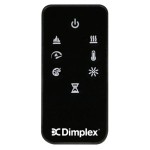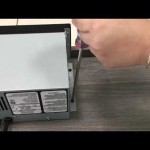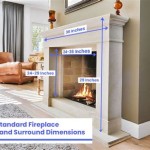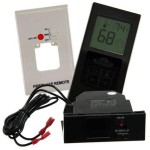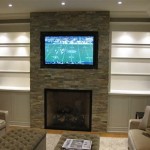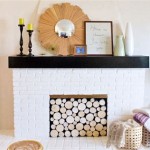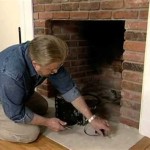Indoor Outdoor Wood Burning Fireplaces: A Comprehensive Guide
Indoor outdoor wood burning fireplaces represent a unique fusion of ambiance and functionality, offering the warmth and appeal of a traditional fireplace in a versatile setting. These structures are designed to bridge the gap between interior comfort and the allure of outdoor living, providing a focal point for both indoor and outdoor spaces. Careful consideration must be given to design, construction, safety, and environmental factors when considering such an installation.
The appeal of an indoor outdoor fireplace stems from its ability to extend the enjoyment of a fire throughout the year. During cooler months, the indoor aspect provides a cozy retreat, while in warmer months, the outdoor component allows for gatherings and entertainment around a crackling fire under the stars. This adaptability makes them a desirable feature for homeowners seeking to maximize their living space and enhance their property's aesthetic value.
However, the construction and installation of an indoor outdoor fireplace are significantly more complex than a standard indoor fireplace. Building codes, ventilation requirements, and material selection are all critical considerations that necessitate professional expertise. Understanding these complexities is essential for ensuring a safe, efficient, and aesthetically pleasing outcome.
Key Point 1: Design and Structural Considerations
The design of an indoor outdoor wood burning fireplace requires careful planning and a holistic approach. The structure must seamlessly integrate with both the interior and exterior aesthetics of the home. This involves considering architectural styles, material palettes, and the overall flow of the living spaces. The fireplace should appear as a natural extension of the home, not an afterthought.
One of the primary design decisions involves determining the specific layout and orientation of the fireplace. Will it be a double-sided fireplace with openings on both the indoor and outdoor sides? Or will it be a single-sided fireplace that is accessible from both areas through a strategically positioned opening? The answer to this question significantly impacts the overall design and structural requirements.
Structural integrity is paramount. The fireplace must be able to withstand the elements, including wind, rain, snow, and extreme temperatures. This requires a robust foundation, durable construction materials, and proper waterproofing. The chimney, in particular, must be designed to effectively vent smoke and gases while also resisting the corrosive effects of weather exposure.
Fire-resistant materials are non-negotiable. The firebox and surrounding areas must be constructed from materials that can withstand high temperatures without cracking, crumbling, or posing a fire hazard. Common materials include firebrick, refractory mortar, and high-temperature concrete. The surrounding structure should be built with non-combustible materials like stone, brick, or metal framing.
Ventilation is another crucial design element. Proper ventilation is essential for ensuring that smoke and gases are effectively expelled from both the indoor and outdoor spaces. This requires a well-designed chimney with adequate height and diameter, as well as consideration of prevailing wind patterns. Downdrafts can be a significant problem with indoor outdoor fireplaces, and measures must be taken to prevent smoke from entering the home.
Furthermore, the design must account for safety regulations and building codes. Local building codes often dictate specific requirements for fireplace construction, including clearances to combustible materials, chimney height, and firebox dimensions. Adherence to these codes is crucial for obtaining the necessary permits and ensuring the safety of the occupants.
The choice of materials also plays a vital role in the overall design. Natural stone, brick, and stucco are popular exterior choices that blend well with outdoor landscapes. Inside, materials can be chosen to complement the interior decor, ranging from rustic stone to modern tile. The key is to create a cohesive look that ties the indoor and outdoor spaces together.
Key Point 2: Safety and Compliance Considerations
Safety is the utmost priority when installing an indoor outdoor wood burning fireplace. The potential for fire hazards, carbon monoxide poisoning, and structural damage necessitates strict adherence to safety regulations and best practices. A qualified professional should be consulted throughout the design, construction, and installation process.
Clearances to combustible materials are critical. National and local building codes specify minimum clearances between the fireplace and any combustible materials, such as wood framing, siding, and furniture. These clearances are designed to prevent the spread of fire and protect the structure of the home. Failure to adhere to these clearances can result in a serious fire hazard.
Carbon monoxide (CO) detection is essential. Wood burning fireplaces can produce significant amounts of carbon monoxide, a colorless and odorless gas that can be deadly. Carbon monoxide detectors should be installed in the home, particularly near sleeping areas and in the vicinity of the fireplace. Regular testing of these detectors is crucial for ensuring their proper functioning.
Chimney maintenance is paramount. The chimney must be regularly inspected and cleaned to prevent creosote buildup. Creosote is a highly flammable substance that accumulates in chimneys as a byproduct of wood combustion. A buildup of creosote can significantly increase the risk of a chimney fire. Professional chimney sweeps can provide thorough inspections and cleaning services.
Proper firebox dimensions are essential for safe and efficient combustion. The firebox should be sized appropriately for the size of the room and the desired heat output. An oversized firebox can lead to excessive fuel consumption and inefficient burning, while an undersized firebox may not provide sufficient heat.
Spark arrestors are necessary to prevent embers from escaping the chimney. Spark arrestors are mesh screens that are installed at the top of the chimney to prevent burning embers from being carried by the wind and potentially igniting nearby vegetation or structures. Local regulations may require the installation of spark arrestors, particularly in areas with dry climates or a high risk of wildfires.
Proper wood storage is also important. Wood should be stored in a dry, well-ventilated area away from the house to prevent the growth of mold and pests. Stacking wood neatly and covering it with a tarp can help keep it dry and protected from the elements.
Fire extinguishers should be readily accessible. A fire extinguisher should be kept near the fireplace and in other strategic locations throughout the home. All occupants of the home should be familiar with the proper use of a fire extinguisher.
Finally, regular inspections by a qualified professional are crucial. A qualified professional can identify potential problems with the fireplace and chimney, such as cracks, leaks, or creosote buildup, and recommend appropriate repairs or maintenance. Regular inspections can help prevent serious problems and ensure the continued safe operation of the fireplace.
Key Point 3: Environmental Considerations and Wood Selection
Wood burning fireplaces, while aesthetically pleasing and providing a natural heat source, can have environmental impacts if not managed responsibly. Carefully selecting wood and implementing proper burning techniques are crucial steps in mitigating these impacts.
The type of wood burned significantly affects emissions. Hardwoods, such as oak, maple, and ash, are generally preferable to softwoods like pine and fir. Hardwoods burn hotter and cleaner, producing less smoke and creosote. Softwoods contain more resin, which contributes to increased smoke and creosote buildup.
Seasoned wood is essential for efficient and clean burning. Seasoned wood has been air-dried for at least six months to a year, reducing its moisture content to around 20 percent. Burning seasoned wood produces less smoke, creosote, and air pollution. Wet or unseasoned wood burns inefficiently and produces significantly more smoke.
Sustainable wood sourcing is important. Consider purchasing wood from local sources that practice sustainable forestry management. Sustainable forestry practices ensure that forests are managed responsibly, preserving biodiversity and protecting the environment. Avoid purchasing wood from unknown or unsustainable sources.
Proper burning techniques can minimize emissions. Build small, hot fires rather than large, smoldering fires. Overloading the firebox with wood can lead to incomplete combustion and increased smoke production. Ensure that the fire receives adequate air circulation to promote efficient burning.
Avoid burning treated or painted wood. Treated or painted wood contains chemicals that can release harmful toxins into the air when burned. These toxins can be harmful to human health and the environment. Only burn clean, untreated, and unpainted wood.
Consider using EPA-certified wood stoves or fireplace inserts. EPA-certified wood stoves and fireplace inserts are designed to burn wood more efficiently and produce less smoke than traditional fireplaces. These appliances meet strict emission standards set by the Environmental Protection Agency (EPA).
Adhering to local air quality regulations is crucial. Many localities have regulations regarding wood burning, particularly during periods of poor air quality. These regulations may restrict or prohibit wood burning during certain times or require the use of EPA-certified appliances. Familiarize yourself with local regulations and comply with them to protect air quality.
Consider alternative fuel options. While wood is the traditional fuel source for these fireplaces, alternative options exist, such as propane or natural gas. These fuels burn cleaner than wood and produce fewer emissions. Converting a wood burning fireplace to gas may be an option to consider for those concerned about environmental impact.
Maintaining the fireplace and chimney properly contributes to cleaner burning. Regular cleaning and maintenance can help ensure that the fireplace is operating efficiently and producing minimal emissions. This includes cleaning the chimney to remove creosote buildup and inspecting the firebox for cracks or damage.

Pin On Fireplaces

Mason Lite Indoor Outdoor Wood Burning Fireplace Kit Patio Furnishings

Indoor Outdoor Fireplace Fireplaces Designs

Double Sided Indoor Outdoor Fireplace Heat Glo

Indoor Outdoor Wood Burning Fireplaces Best Fire Hearth Patio

Outdoor Lifestyles Castlewood Wood Fireplace Fireside Hearth Home

Outdoor Wood Fireplaces Jetmaster

Outdoor Lifestyles Twilight Modern Indoor Fireplace See Through Fireplaces

Outdoor Lifestyles Twilight Modern Double Sided Gas Fireplace Fireside Hearth Home

Majestic See Through Fireplaces Indoor Outdoor
Related Posts

